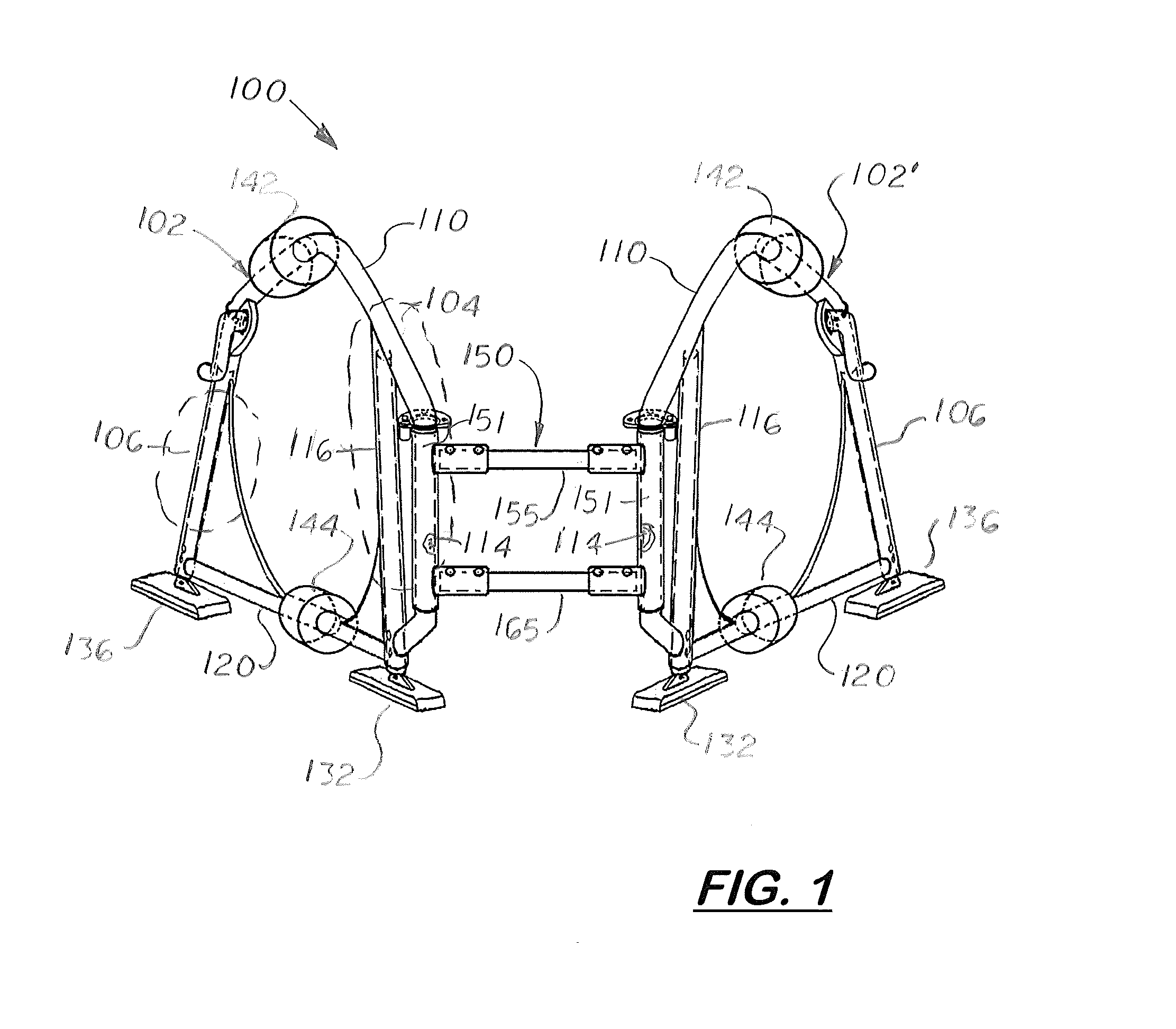Portable Calisthenics Exercise Device
a calisthenics and exercise device technology, applied in the field of physical exercise equipment, can solve the problems of difficult access, difficulty in moving back and forth from the wheelchair to the floor, etc., and achieve the effects of increasing the flexibility of muscle tissues, increasing the body movement, and increasing the flexibility of muscles
- Summary
- Abstract
- Description
- Claims
- Application Information
AI Technical Summary
Benefits of technology
Problems solved by technology
Method used
Image
Examples
Embodiment Construction
)
[0063]Referring to the accompanying FIGS. 1-12, there is shown a portable device 100 designed for performing different callisthenic exercises, such as stretching, bending, twisting, push ups, leg lifts, dips, etc. More-specifically, FIGS. 1-6 is a front perspective view of the portable physical exercise device 100 that includes a rigid, right frame support 102 and a rigid left frame support 102′ connected to an intermediate front fort assemble 150.
[0064]Each frame support 102, 102′ includes an upper support bar 110 and a lower support bar 120. The upper support bar 110 is U-shaped and configured to curve upward over the straight lower support bar 120. The upper support bar 110 includes a front tube 116 that connects to the front end of the lower support bar 120.
[0065]Extending forward from the upper support bar 110 and the lower support bar 120 is a front extension 111. Each front extension 111 includes upper and lower extension arm 112, 113, respectively, and a vertical arm 114 di...
PUM
 Login to View More
Login to View More Abstract
Description
Claims
Application Information
 Login to View More
Login to View More - R&D
- Intellectual Property
- Life Sciences
- Materials
- Tech Scout
- Unparalleled Data Quality
- Higher Quality Content
- 60% Fewer Hallucinations
Browse by: Latest US Patents, China's latest patents, Technical Efficacy Thesaurus, Application Domain, Technology Topic, Popular Technical Reports.
© 2025 PatSnap. All rights reserved.Legal|Privacy policy|Modern Slavery Act Transparency Statement|Sitemap|About US| Contact US: help@patsnap.com



